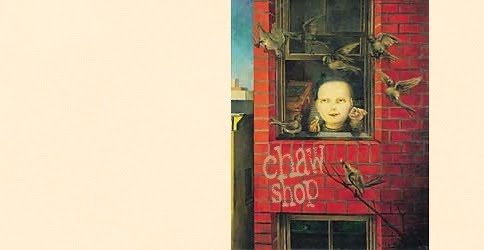Rebels
In the literary world, we often talk about writers who “break all the rules.” Obviously, this is hyperbole. If a writer broke all the rules, his book would be incomprehensible. But there are occasions when a book ignores one or more of the major foundational elements upon which most fiction rests. Not every work of fiction has incident or meaningfully developed characters, for example. The Mezzanine by Nicholson Baker is a novel where nothing happens: a man rides an escalator and thinks about shoelaces, popcorn, doorknobs, and CVS bags, among other things. Invisible Cities by Italo Calvino consists of descriptions of fifty-five fantastical metropolises, loosely linked together by passages relating a meandering conversation between Marco Polo and Kublai Khan. Letters to Wendy’s by Joe Wenderoth is an entire book of bizarre comment cards written to the eponymous fast-food restaurant. All three of these books – and there are plenty of others like them – succeed not in spite of but because of the way they throw off convention. They make major defining decisions and stick with them: they entirely exclude certain strategies and devices from the work’s purview and do something else instead.
In my work at three literary agencies, I have encountered only a handful of submissions that attempted to do something comparable to the above-mentioned titles. The vast majority of fiction manuscripts are not trying to “break all the rules,” or even any of the major ones. These books have incident and character development, scenes and dialogue and descriptions. These are the types of books I’m going to discuss.
Here’s a common scenario. A writer turns in a novel. In it, a woman’s husband gets kidnapped. As she waits for news from the detectives on the case, she remembers their long marriage and problems they’ve overcome as a couple – at one point, she had an affair, but he forgave her. Meanwhile, the daughter, distraught about her father, acts out with friends, experimenting with drugs and losing her virginity. Then we have a couple of scenes thrown in showing the husband in an underground cell. In the end, the detectives manage to track down the kidnappers, who turn out to be religious extremists, and they return the husband to his family.
Egads.
From the writer’s point of view, this is highly commercial material. It’s got it all: kidnapping, adultery, teenage drug culture, and ripped-from-the-headlines nutso fundamentalism. And let’s just say that on top of that, it’s “beautifully written,” meaning the author’s word choices are strikingly original and the close third person feels appropriate to each character. “Wow,” thinks the writer, “I have hit this motherfucker out of the park.” What could possibly be the problem?
The problem, of course, is that nothing connects. In the present day of the novel, neither the woman nor her husband take any actions with consequences – they sit in rooms and think. The daughter’s actions may have the consequence of disillusioning her, but they have no bearing on the main arc of the novel or on anyone else. And there’s no connection between earlier events in the characters’ lives (like the wife’s affair) and their present situation (the kidnapping). One thing may follow another, but one thing doesn’t cause another. It may have characters, settings, and scenes, but it isn’t a story.
However, here’s another likely scenario: when an agent (or editor, or critique partner) points this out to the writer, the writer’s response is often to say, “But I don’t want this to follow a traditional narrative arc. I’m trying to do something innovative, something that breaks all the rules.”
What is going on here? For me, and I suspect, for a lot of writers, fiction is particularly appealing because it allows us to inhabit a place where the rules of everyday life don’t apply. The idea that our fiction is in some way “traditional,” “conventional,” and thus beholden to certain “constraints,” immediately presses a button in the brain marked REBEL. This REBEL button shut down my brain when teachers asked me to sketch a story in one or two sentences, both in early college and later in graduate school; this REBEL button may have something to do with the odd way so many writers (perhaps most famously Lorrie Moore) boast of their allergy to plot. Yet this rebellion is a half-assed, timid, meaningless one. If authors like Russell Edson or David Markson are aesthetic bohemians, wandering the land restlessly, rootlessly, and sleeping in tents of thin silk upon the rocky soil, then their faux-rebellious counterparts (my less enlightened self very much included) are assholes in midlife crisis who want to have it both ways: they take off for a week, ignoring their kids and cheating on their spouses, then expect to return home to central air and the welcoming embrace of a Sealy Posturepedic as though nothing ever happened. They want the comforts of drama, its familiar satisfactions, but they don’t want to do the work of setting it up.
It’s also difficult to look at a document of 300+ pages of meticulously constructed sentences and say, “I need to tear this down and build something entirely new with the scraps.” Yet this is basically what’s necessary in a case like the one I described. And that’s why I began this series by advocating that writers ask, “What is this book about?” in the very first stages, not at the end, where for all but the humblest and most persistent it’s really just too late.
...next up: how to start thinking about maybe beginning to consider answering these questions
OR... back to: what's a query for, anyway? AND the art of the pitch??
...next up: how to start thinking about maybe beginning to consider answering these questions
OR... back to: what's a query for, anyway? AND the art of the pitch??


No comments:
Post a Comment